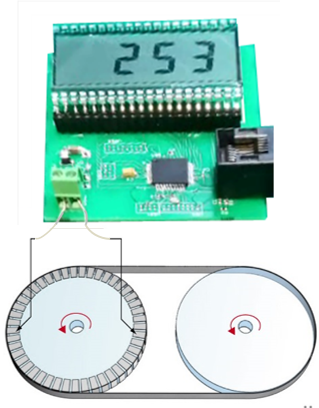Self-Powered Wearables Can Monitor Cardiovascular Health, Research Finds

Triboelectric nanogenerators harvest the medical energy coming from the human body and employ the electric power to back the other biomedical devices’ operations.
Researchers from Purdue University recently devised "triboelectric nanogenerators," self-powered wearables, also called TENGs that has polyvinyl alcohol or PVA-based contact layers. It is invented primarily for the monitoring of cardiovascular health.
Essentially, according to development team leader, Wenzhuo Wu, the PVA-based triboelectric nanogenerators present an excellent promise for "self-powered biomedical devices" and welcome new technologies that utilize extensively set out biocompatible materials that are used for possible and environmentally-friendly generation of helpful devices in electronics, sensor and energy applications.
Wu added, they have transformed PVA, which is among the most-frequently-used polymers for biomedical applications into something that can be worn, self-powered TENGs.
Such a device can detect the unnoticeable amount of deformation of the skin prompted by human pulse. Aside from detection, the device can also capture the so-called cardiovascular information programmed in the pulse signals, described in the study as, "With high fidelity."
ALSO READ: 3 Things You Need to Know about Home Cholesterol Test Kits
Self-Powering Function
Cardiovascular health is more often than not, monitored and determined through the use of echocardiogram for the measurement of the electrical activity in the heart, or a process known as photoplethysmography which gauges changes in blood volume "in the microvasculature."
Wu explained, through a statement that technologies can most of the time, be disturbing to patients and have not been transformed into wearables for customized "on-demand monitoring."
TENGs yield fast information with distinctive peaks for blood expulsion, a reflection of blood in the lower body, and "blood rejection" from the closed aortic valve, which may allow detection of common cardiovascular illnesses such as CVD, ischemic heart disease and coronary artery disease.
Wu also said PVA provides a great opportunity as prospective constituents in "future wearable self-powered devices."
DON'T MISS THIS: At-Home Blood Pressure Monitor: 5 Things to Consider When Choosing a Reliable One
Not the First Time in the Invention of Self-Powering Wearables
This is not the first time Purdue University is developing a self-powering wearable. In August last year, a team of researchers from the said university devised a "machine-washable, self-powering fabric" that lets an individual wearing it to control electronic gadgets by a type of clothing that prevents bacteria, as well.
In connection to this wearable, the researchers claimed, their invention was waterproof. It is also said to be stain resistant.
According to assistant professor, Ramses Martinez from the School of Industrial Engineering, this was the first time, a technology with the capability of transforming any available textile or cloth item into a "self-powered e-textile" which has sensors, "music players or simple illumination" exhibits through the use of simple embroidery minus the need for costly fabrication procedures that require extensive steps or expensive apparatus.
Mechanical Energy Harvested
The group found that these triboelectric devices, particularly the PVA-based ones, could "harvest the medical energy" coming from the human body and employ the electric power to back the other biomedical devices' operations.
Also, according to Wu, such devices can work "as self-powered sensors" for the detection and monitoring of the power-driven activities from the body of a person, in applications like monitoring of health, teleoperated robotics, human-machine interface, consumer-electronic products, and virtual and amplified technologies.
To date, according to a report, the group is searching for partners to help them commercialize the patented technology.
IN CASE YOU MISSED THIS: The Smallest Imaging Device of the World Can Help Identify Causes of Heart Disease
Jul 27, 2020 06:20 AM EDT





